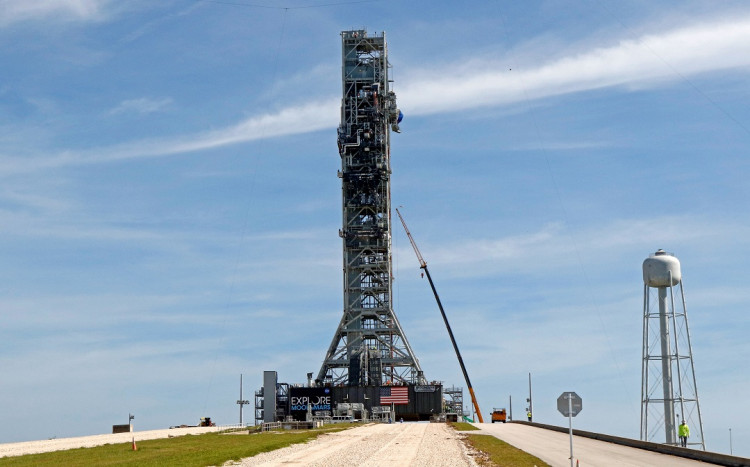The Space Launch System (SLS), the agency's massive new moon rocket, completed a more than 50-hour launch simulation defined as a "wet dress rehearsal" on Monday evening (June 20). Following several failed attempts in April, the mission team was able to fully fuel SLS for the first time on Monday, completing a series of critical prelaunch tests.
The final hurdle in validating NASA's Space Launch System (SLS) rocket for its upcoming Artemis I mission was scrapped on previous occasions due to technical issues such as a fuel leak and stuck valves, and a hydrogen leak nearly derailed the most recent attempt.
Regardless, NASA held a wet dress rehearsal on June 20 and finished a mock countdown process down to T-29 seconds.
The wet dress rehearsal was the first time all of the SLS rocket's propellant tanks were fully loaded, allowing engineers to test launch-day conditions in rapid succession.
The weekend was spent by ground crews at NASA's Kennedy Space Center (KSC) in Florida assessing the SLS, Orion capsule, and ground systems of Artemis 1 in the same manner that they would if they were getting ready for a launch.
NASA's Artemis program, a modern successor to Apollo that the space agency hopes will assist in establishing a permanent human presence on the moon, is built around SLS. A new moon rocket also follows a new moonshot.
The latest wet dress rehearsal was meant to be SLS's last obstacle because it has never flown. But it's not yet apparent if Artemis 1 is genuinely prepared to fly.
Blackwell-Thompson and other NASA officials on the call agreed the wet dress was "extremely smooth," citing the quick-disconnect leak as the only major hiccup during Monday's tanking.
Now, agency officials must decide whether this wet dress was adequate. The leak kept the count from reaching the T-9 second target for wet dress launch abort, but that doesn't mean NASA will have to repeat the wet dress rehearsal before deciding whether to launch the Artemis 1 mission, which will send an uncrewed Orion on a roughly month-long journey around the moon. And nothing had been decided by Tuesday's call.
NASA officials on the call were upbeat about the future, even if they were unsure what would happen to Artemis 1 shortly. On the call, everyone agreed that a clearer path forward would emerge in a few days, after the team had examined the Artemis 1 stack and data from the wet dress rehearsal.






